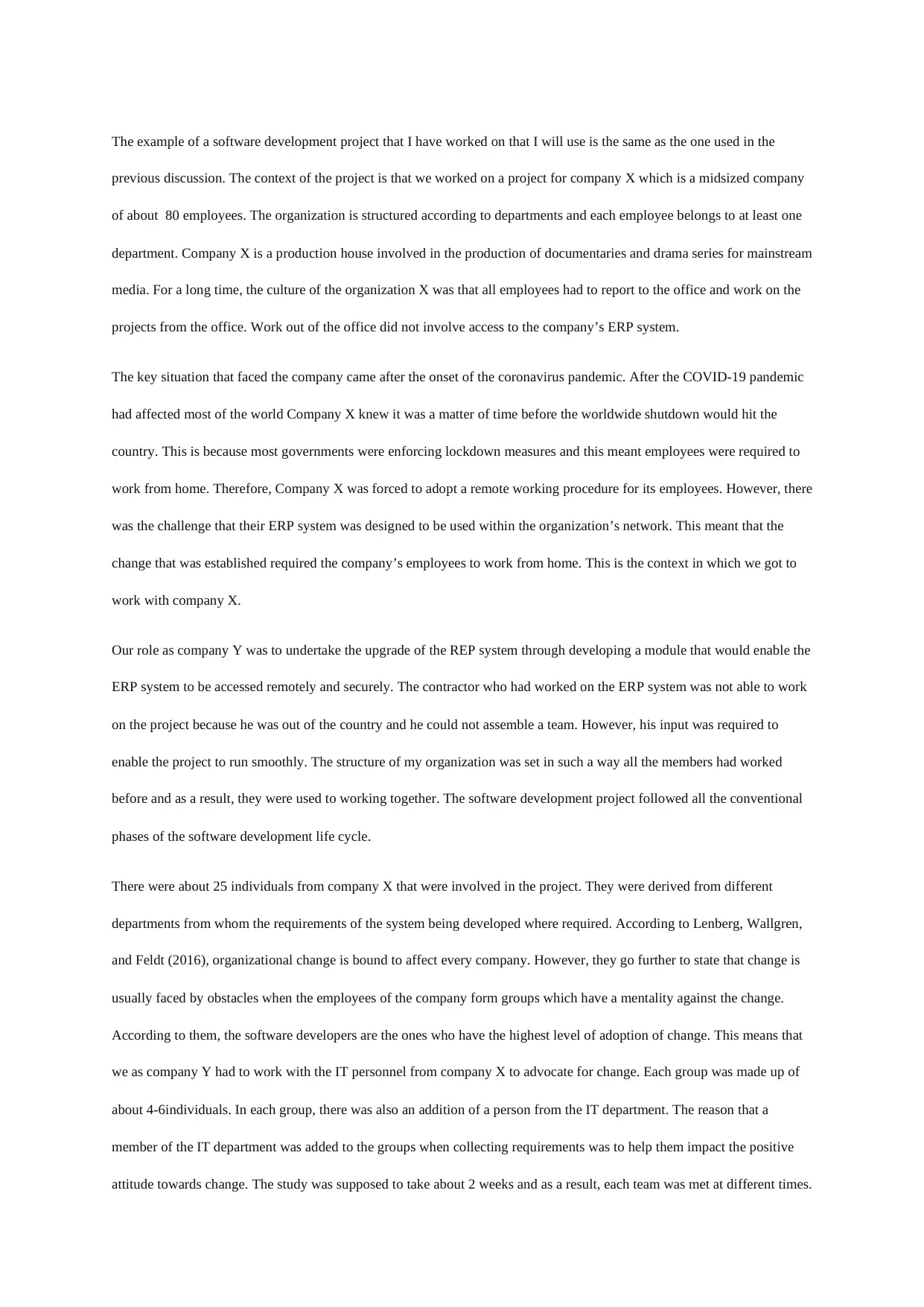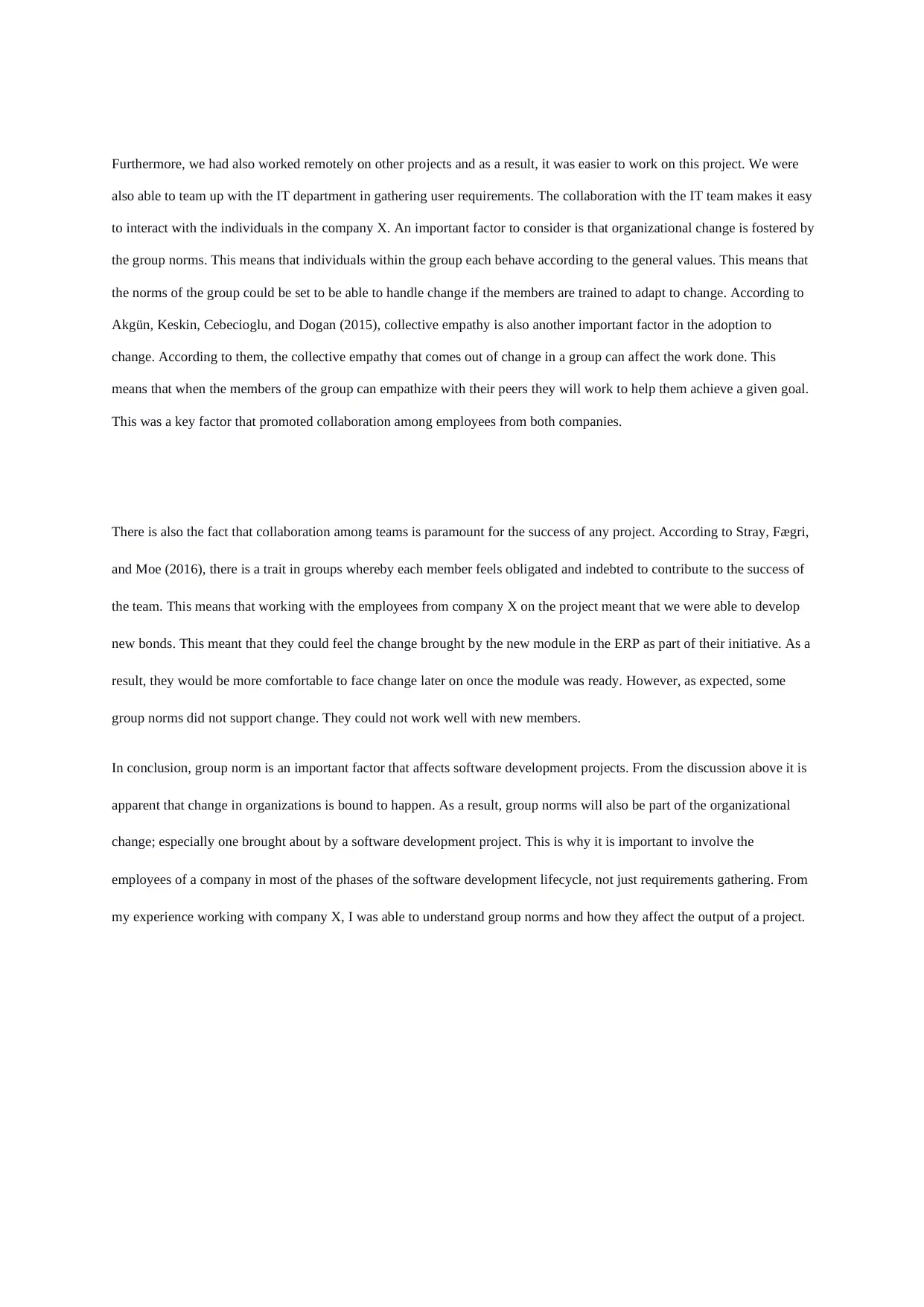Report on a Software Development Project for Remote ERP Access
VerifiedAdded on 2020/11/30
|3
|1174
|112
Report
AI Summary
This report provides an in-depth analysis of a software development project undertaken for Company X, a mid-sized production house, to enable remote access to their ERP system during the COVID-19 pandemic. The project involved developing a module to allow secure remote access, addressing the limitations of the existing ERP system designed for in-office use. The report details the project's adherence to the software development life cycle, the involvement of stakeholders from various departments, and the crucial role of organizational change management. It examines the impact of group norms, collective empathy, and collaboration on the project's success, emphasizing the importance of employee involvement in all phases. The report also references research on organizational change and software development teams, highlighting the significance of positive attitudes and adaptability to change within the organization. The project's challenges included adapting to remote work and ensuring the smooth integration of the new module while managing group dynamics. The report concludes with a discussion of the lessons learned, emphasizing the importance of considering group norms in software development projects and the need for employee involvement throughout the software development life cycle.
1 out of 3









![[object Object]](/_next/static/media/star-bottom.7253800d.svg)